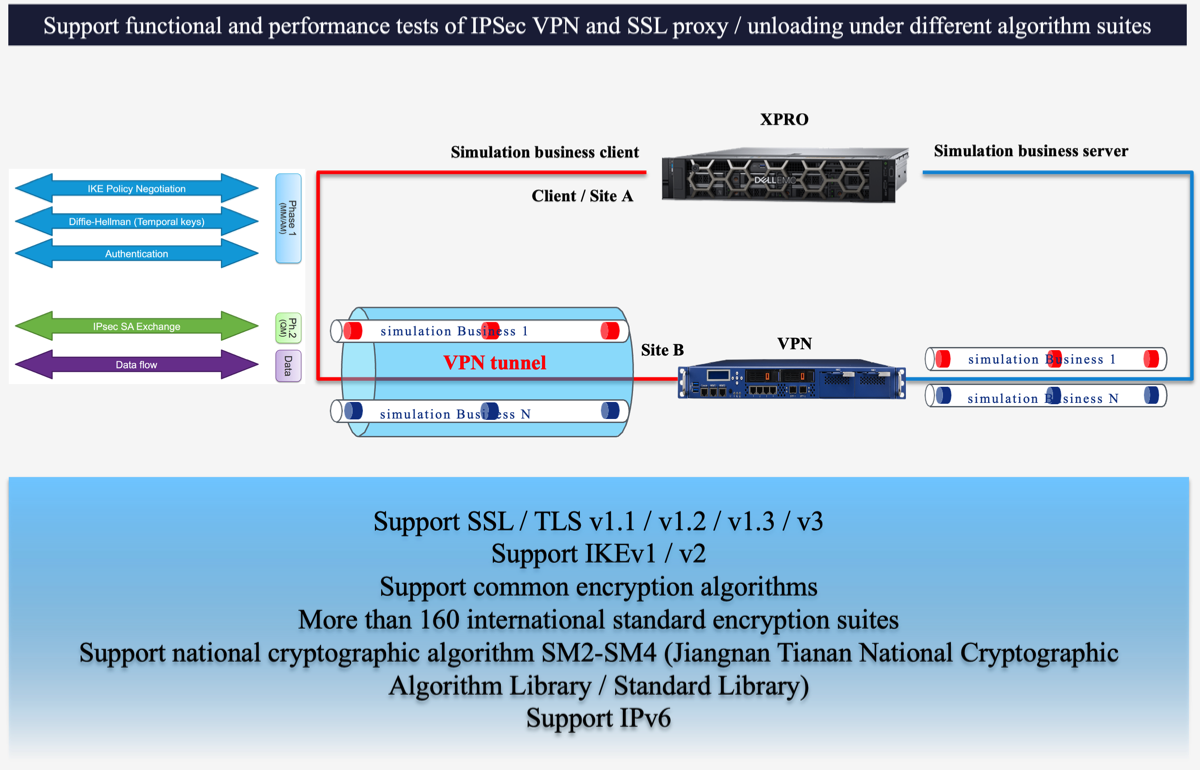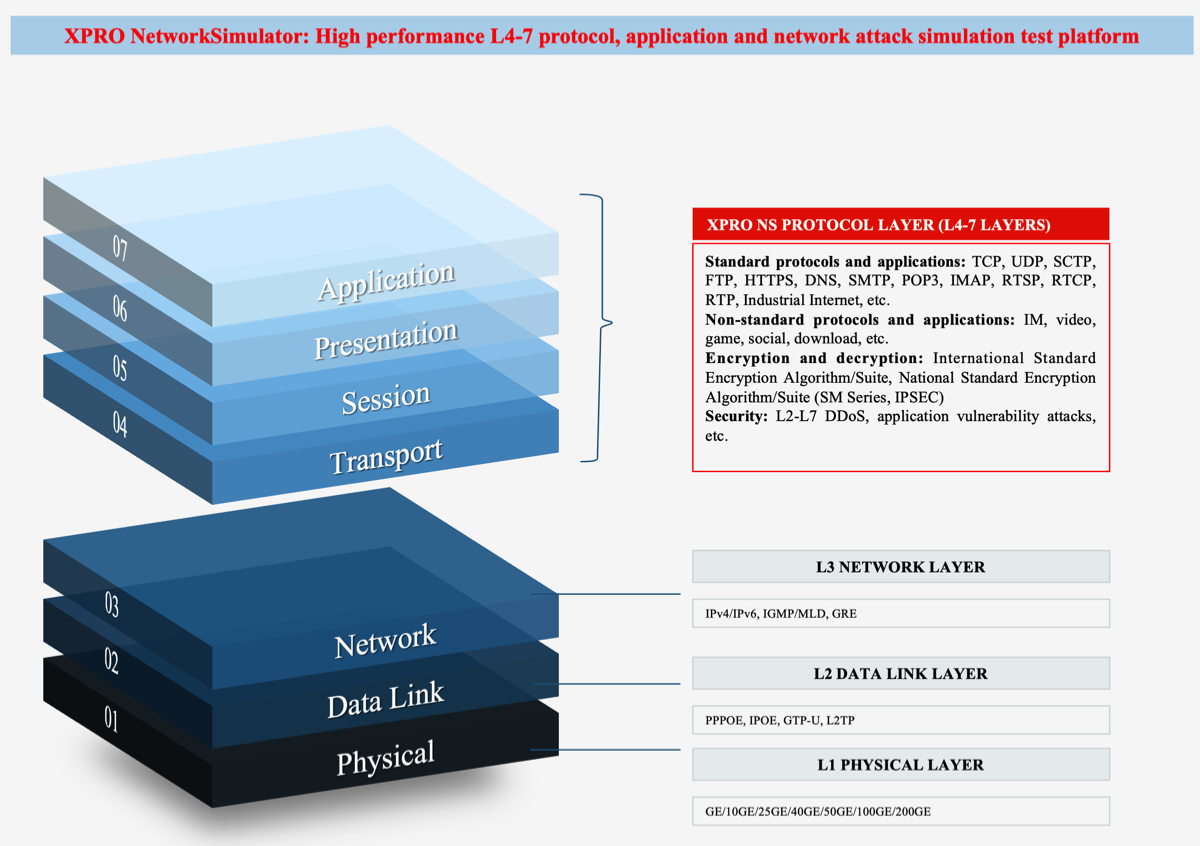Layer 2-7 Network Testing
High-performance simulation testing tool

The XproTel Network Simulator is an industry-leading test solution. It integrates all testing components for L2-L7 testing onto a single platform, eliminating the need for separate L4-L7 and L2-L3 simulation testing instruments.
For testing L2-L3 layer, XproTel’s Network Simulator enables RFC2544 testing without switching between different hardware testing platforms, thanks to an innovative hardware solution. For the L4-L7 layer testing, XproTel’s application simulation testing solution can simulate a wide range of standard protocols and applications such as TCP, UDP, HTTP, HTTPS, FTP, DNS, SIP, RTSP, RTP, SMTP, POP3, IMAP, IMAP4, and IPsec. This is made possible by the flexibility and openness of the x86 platform, coupled with an innovative stateful playback engine that enables the simulation of large quantities of non-standard protocols and applications.
Through a flexible traffic engine and traffic modeling components, XproTel simulates and sets up a traffic model that closely resembles real network environments, providing more accurate and valuable testing results.
Unlike traditional dedicated hardware architectures, XproTel’s Network Simulator, developed on the x86 platform, utilizes a self-developed high-performance simulative protocol stack and packet construction engine. This allows it to achieve impressive performance levels, including up to 3 million sessions per second of new TCP sessions on a single dual-CPU hardware, over a hundred million concurrent TCP sessions, and 100 Gbps throughput.
XproTel Network Simulator supports network interfaces ranging from 1 GbE to 10 GbE, 25 GbE, 40 GbE, 50 GbE, 100 GbE and 400GbE, using universal network interface cards based on PCIe interface that utilize Intel or Mellanox network controller chips. This eliminates the need for specialized testing network cards and provides flexibility during testing by allowing different universal network interface cards to be used to meet specific testing requirements. This approach improves testing flexibility and reduces costs by avoiding the limitations of fixed network interface specifications in dedicated hardware and test boards.
XproTel Network Simulator supports network interfaces ranging from 1 GbE to 10 GbE, 25 GbE, 40 GbE, 50 GbE, 100 GbE and 400GbE, using universal network interface cards based on PCIe interface that utilize Intel or Mellanox network controller chips. This eliminates the need for specialized testing network cards and provides flexibility during testing by allowing different universal network interface cards to be used to meet specific testing requirements. This approach improves testing flexibility and reduces costs by avoiding the limitations of fixed network interface specifications in dedicated hardware and test boards.

